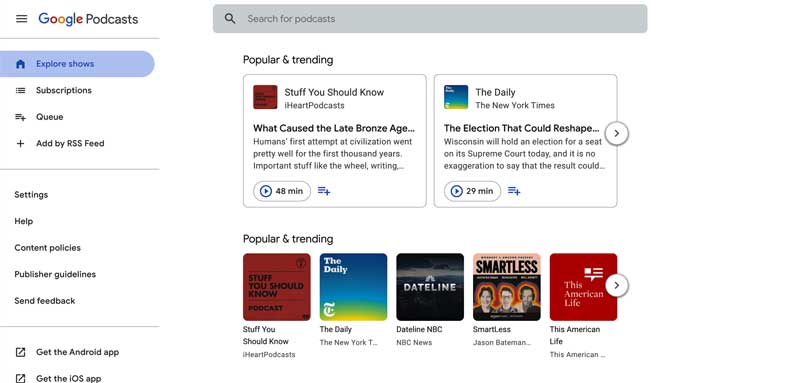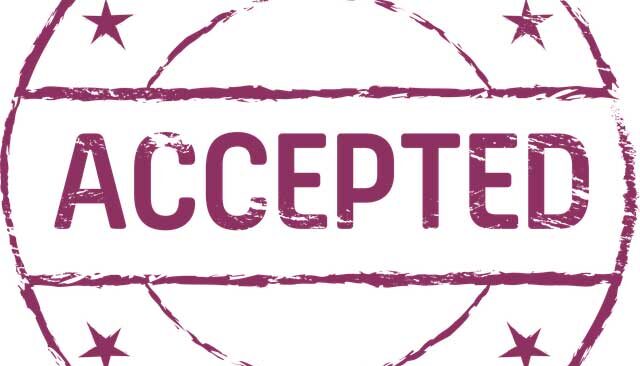Google Podcasts has quickly become a popular choice for podcast enthusiasts, thanks to its seamless integration with Android devices and Google Assistant.
It offers a user-friendly interface, making it easy for listeners to discover new shows and stay updated with their favorite podcasts.
As a podcaster, you simply cannot afford to miss out on the opportunity to tap into this vast and rapidly expanding audience.
In this article, we'll cover everything you need to know to get your podcast up and running on Google Podcasts.
We'll discuss the importance of Google Podcasts for audience growth, explain the concept of RSS feeds, and outline the steps to upload your podcast to the Google Podcasts Manager.
We'll also delve into what happens after your podcast gets accepted or rejected and provide tips on making the most of your Google Podcasts experience.
By the time you finish reading this guide, you'll be well-equipped with the knowledge and tools to successfully submit your podcast to Google Podcasts and take your podcasting game to the next level.
Disclosure: Although I receive affiliate compensation at no additional cost to you to support this site that compensation in no way influences my recommendations, which are strictly informed by my 10+ years of online business experience consulting for clients large and small. My aim is to always recommend tools that offer the best return for your investment (for more details, read my Affiliate Disclosure).
Why is Google Podcasts So Critical for Growing Your Audience?

Google Podcasts is rapidly gaining momentum as a preferred platform for podcast listeners, and for good reason. It offers several advantages that make it a critical component of any podcaster's growth strategy.
Let's explore some of the key reasons why Google Podcasts is so essential for expanding your audience:
- Integration with Google Assistant and Android devices: Google Podcasts is tightly integrated with Google Assistant, which powers millions of Android devices worldwide. This seamless integration makes it incredibly easy for users to access your content through voice commands, and with Android being the dominant mobile operating system globally, your potential audience reach is massive.
- Enhanced search functionality: As you'd expect from a product developed by the world's leading search engine, Google Podcasts boasts a robust search functionality. This feature makes it more likely for your podcast to be discovered by potential fans searching for content similar to yours. The platform also uses advanced algorithms to recommend relevant podcasts to users, further increasing your chances of being found.
- Automatic transcription and SEO benefits: Google Podcasts automatically transcribes your episodes, making them searchable within Google's search engine. This added search engine optimization benefit means that your podcast can appear in relevant search results, driving even more organic traffic to your show.
- Cross-device syncing and seamless user experience: Google Podcasts offers cross-device syncing, allowing listeners to start an episode on one device and continue where they left off on another. This seamless experience encourages users to consume more content and ensures they don't miss out on your latest episodes.
- Analytics and insights: Google Podcasts Manager provides valuable insights into your audience's listening behavior, including plays, listening duration, and more. These analytics can help you understand your listeners better, enabling you to create content that resonates with them and ultimately leads to audience growth.
- International reach: Google Podcasts is available in multiple languages and regions, giving your podcast a global presence. By submitting your podcast to this platform, you're opening the door to connect with listeners from all corners of the world.
What is an RSS Feed and How to Set It Up?

An RSS feed is a fundamental aspect of podcasting (RSS stands for Really Simple Syndication.)
It acts as a bridge between your podcast host and various podcast directories, including Google Podcasts, ensuring that your content is delivered to your listeners' devices automatically.
Understanding RSS Feeds
An RSS feed is essentially an XML file that contains essential information about your podcast, such as the title, description, cover art, and episodes.
When you submit your podcast to directories like Google Podcasts, you provide them with your RSS feed URL. These platforms then use this URL to fetch your podcast's metadata and episodes, making them available to listeners.
Whenever you publish a new episode, your RSS feed gets updated, and the podcast directories retrieve the new content, ensuring that your subscribers receive the latest episodes without any manual intervention.
In other words, RSS feeds automate the process of content distribution, making it a breeze for both podcasters and listeners.
Here's how to set up your RSS feed:
- Choose a podcast hosting platform (e.g., Libsyn, Anchor, Podbean, etc.)
- Upload your podcast episodes to the hosting platform
- Fill out your podcast's metadata (title, description, cover art, etc.)
- The hosting platform will generate an RSS feed URL for you--copy that URL and save it for later
Seven Easy Steps for Uploading Your Podcast to Google Podcasts
Alright, now that you've got your RSS feed set up, let's dive into the steps to upload your podcast to Google Podcasts Manager:
- Make sure you have a podcast host: As mentioned earlier, you'll need a hosting platform like Libsyn, Anchor, or Podbean to store your podcast episodes and generate your RSS feed.
- Make sure your cover art meets Google Podcasts specifications: Google Podcasts requires cover art to be in JPEG or PNG format and at least 1400x1400 pixels. So, double-check your artwork before moving on.
- Obtain the RSS link of your podcast from your host: Head over to your podcast hosting platform and grab the RSS feed URL you generated earlier.
- Create an account in the Google Podcasts Manager: Visit Google Podcasts Manager and sign in with your Google account. If you don't have one, you'll need to create one first.
- Add a new show to Google Podcasts Manager: Once you're logged in, click on "Add a show" and paste your RSS feed URL into the provided box.
- Verify your podcast: Google will send a verification code to the email address associated with your podcast's RSS feed. Enter the code in Google Podcasts Manager to confirm ownership.
- Submit your podcast for review: After verifying your podcast, click "Submit for Review." Google will review your podcast, which typically takes a few days. They'll notify you by email when your podcast is approved and available on Google Podcasts.
What Happens After You Get Accepted?

Congrats! Your podcast is now on Google Podcasts. You'll receive an email notification from Google letting you know that your podcast is live.
You can now monitor your podcast's performance, including listener stats and episode analytics, right from Google Podcasts Manager. Keep an eye on your metrics to see how your podcast grows over time.
What Happens If You Get Rejected?
If your podcast is rejected, don't fret. Google will let you know the reason for the rejection in their email.
Common reasons include:
- Incomplete or incorrect metadata (title, description, etc.)
- Cover art not meeting Google Podcasts specifications
- Copyright or content policy violations
To resolve any issues, review the guidelines provided by Google, and make the necessary changes to your podcast.
Once you've fixed the problem, resubmit your podcast for review. Keep in mind that it may take a few days for Google to reevaluate your submission.
Wrapping Things Up
Take the time to understand RSS feeds and ensure that your podcast is optimized for Google Podcasts so you can streamline the submission process.
By following the steps outlined above, you'll be able to leverage the power and size of Google Podcasts to increase your show's visibility.
In doing so, you'll get your podcast in front of a worldwide audience, ultimately leading to listener growth and a loyal fan base.







